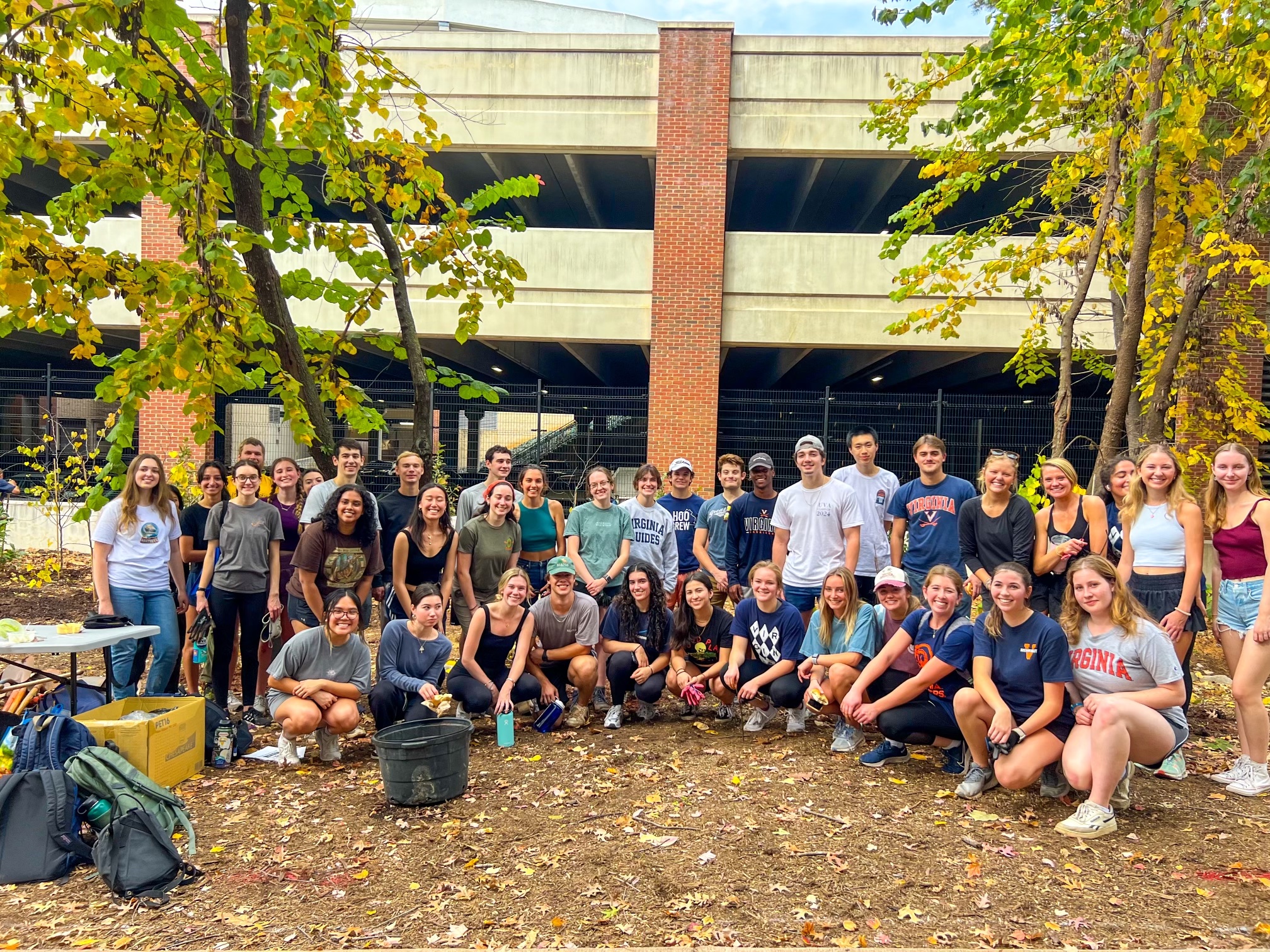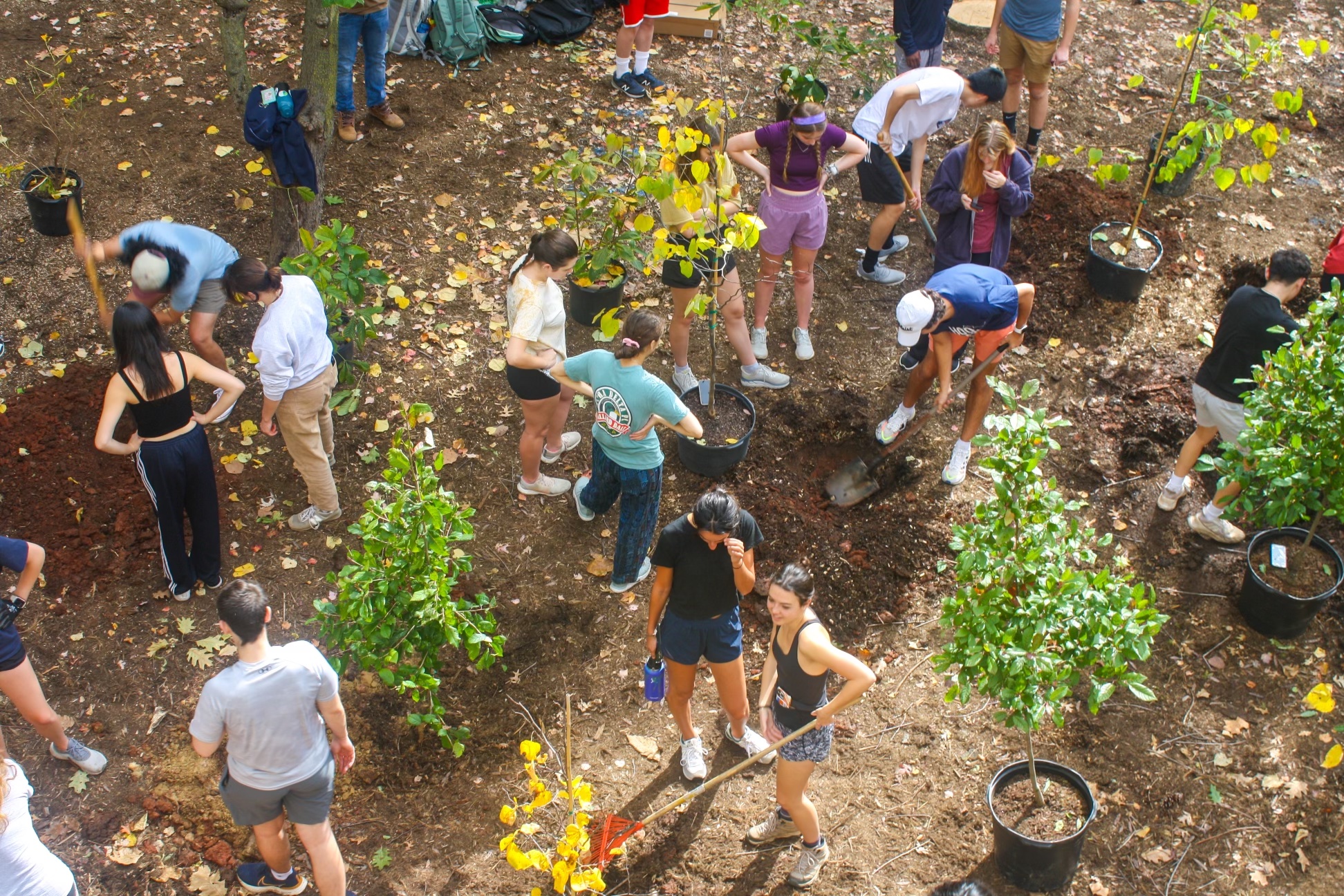The Forest Patches Project
NWG Outreach and Morven Team Member Maddie Morphis was also involved in the Decarbonization + Academy over the summer. Under the supervision of Professor Tim Beatley in the School of Architecture, she and two other students developed a project to implement forest patches on UVA's Grounds.
On October 27, 2023, NWG members helped the Forest Patches at UVA research team plant a forest patch on Grounds, by Scott Stadium. A forest patch is defined as “a place where forest vegetation is spontaneously regenerating and predominately self-organizing, located in a matrix of urban land uses, such as the built environment.” The forest patch is located by the parking garage at Scott Stadium, and all species planted are native to the area, including Black Tupelo, Red Bud, Yellow Buckeye, Rhododendron, and Beebalm. Forest patches are well known for being a natural carbon sequestration tool, but they also serve as a storage mechanism for reactive nitrogen. Plants primarily take up nitrogen in the form of nitrate and ammonium as nutrients. The nitrogen is then stored in plants as amino acids and protein. The team found existing forest patches on Grounds to be sequestering ~13,000 MT of carbon per year. Given that wood is 0.02% nitrogen, around 26 MT of nitrogen is sequestered each year by UVA forest patches.
The Decarb+ Team, including Maddie, is working with UVA to plan further tree plantings in other locations around Grounds. The goal is to have multiple forest patches scattered across Grounds, functioning to sequester nitrogen and carbon as well.
Some photos of the tree planting are included below:

